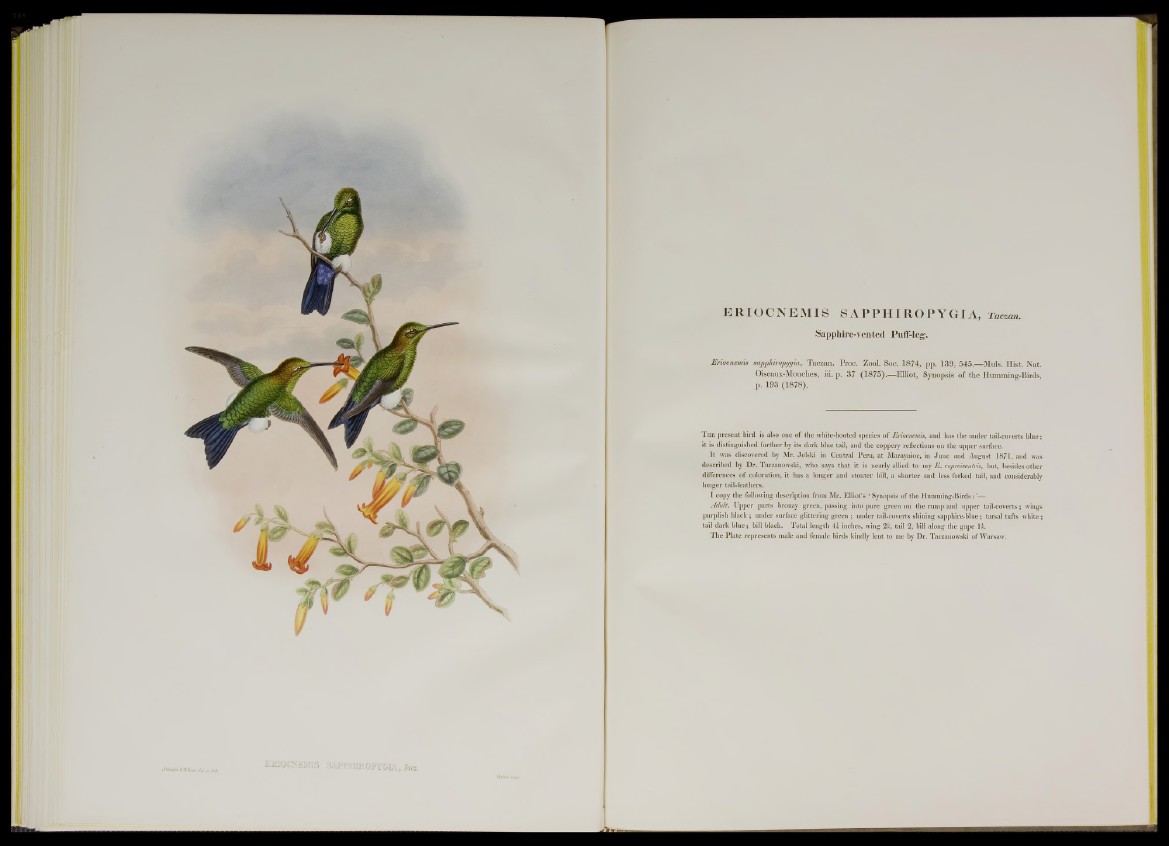
J'GotM IH'HartdeLiilidv e s io c k em :IS SAFPHIROJFYGIA.s Too.
ERIOCNEMIS SAPPHIROPYGI A, Taczan.
Sapphire-vented Pufi-leg-.
Eriocnemis sapphiropygia, Taczan. Proc. Zool. Soc. 1 8 7 4 , pp. 1 3 9 , 5 4 5 .— Muls. H ist. Nat.
Oiseaux-Mouches, iii. p. 3 7 (1 8 7 5 ) .— E llio t, S ynop sis o f the Ilumming-Birds,
p. 1 9 3 (1 8 7 8 ).
T he p re s e n t b ird is also o n e o f th e white-booted species o f Eriocnemis, and has th e u n d e r tail-coverts b lu e ;
it is d istin g u ish ed lu rth e r by its d a rk blue tail, and th e co p p e ry reflections on th e u p p e r surface.
It was discovered by Mr. Jelski in Central Peru, at Maraynioc, in June and August 1871, and was
described by Dr. Taczanowski, who says that it is nearly allied to my E . cupreiventris, but, besides other
differences o f coloration, it has a longer and stouter bill, a shorter and less forked tail, and considerably
longer tail-feathers.
I copy the following description from Mr. Elliot’s ‘ Synopsis of the Humming-Birds : ’—
Adult. Upper parts bronzy green, passing into pure green on the rump and upper tail-coverts ; wings
purplish black ; under surface glittering green ; under tail-coverts shining sapphire-blue ; tarsal tufts white ;
tail dark blue ; bill black. Total length 4 i inches, wing 21, tail 2, bill along the gape l i .
The Plate represents male and female birds kindly lent to me by Dr. Taczanowski o f Warsaw.